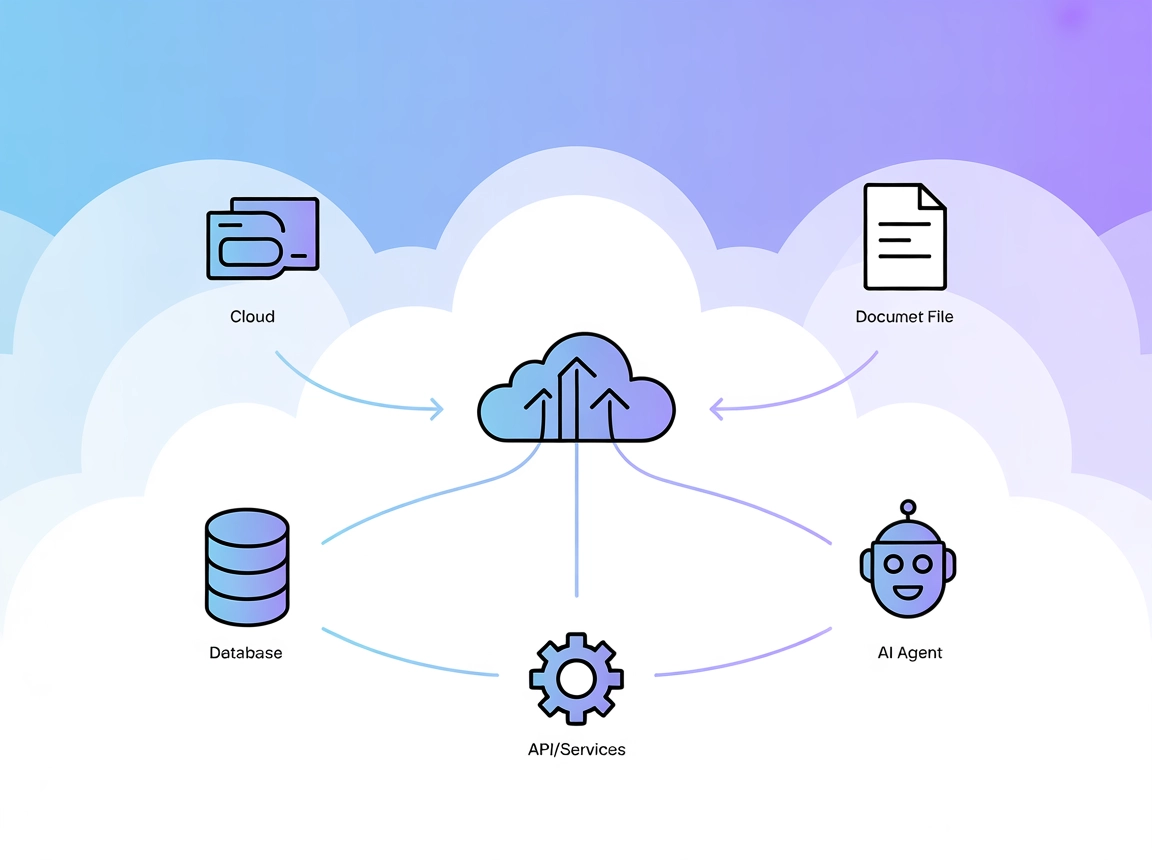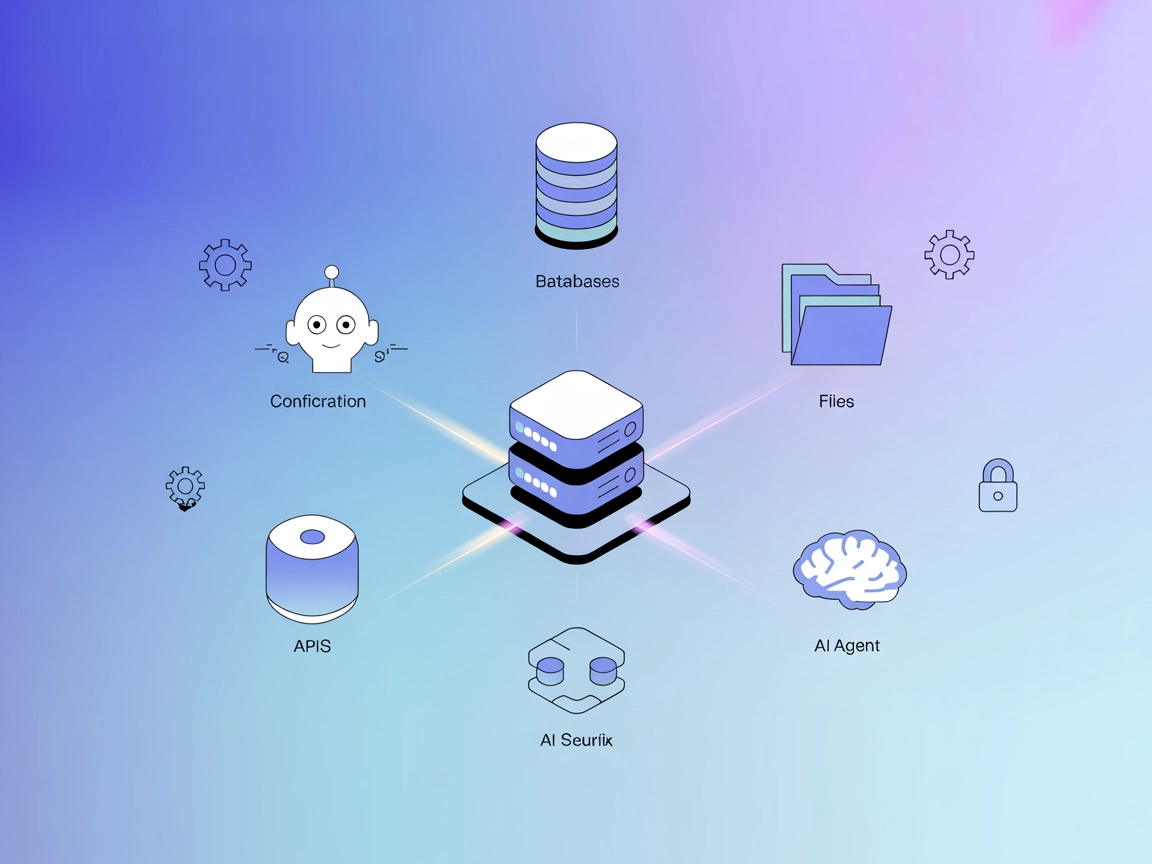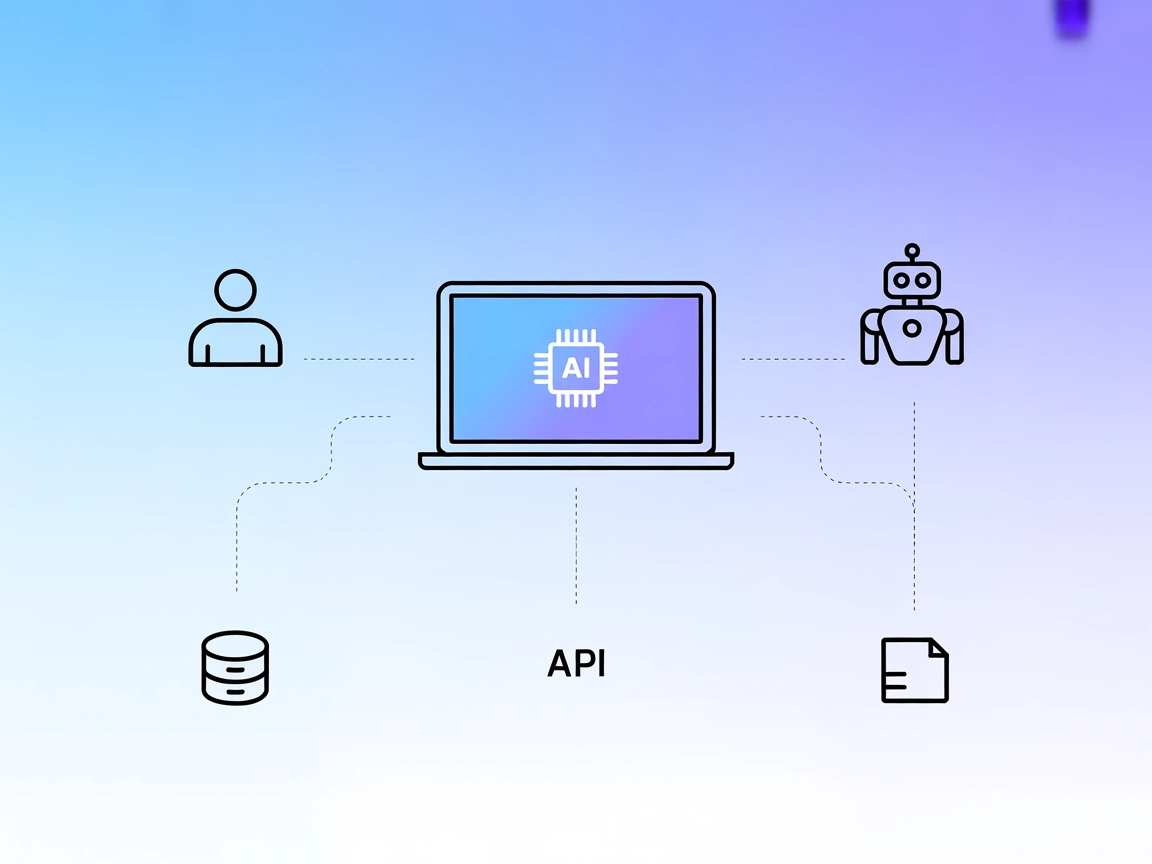
Model Context Protocol (MCP) Server
The Model Context Protocol (MCP) Server bridges AI assistants with external data sources, APIs, and services, enabling streamlined integration of complex workfl...

Seamlessly connect Blender to AI assistants! BlenderMCP empowers you to automate 3D modeling, scene creation, and asset import in Blender using natural language or LLM commands.
FlowHunt provides an additional security layer between your internal systems and AI tools, giving you granular control over which tools are accessible from your MCP servers. MCP servers hosted in our infrastructure can be seamlessly integrated with FlowHunt's chatbot as well as popular AI platforms like ChatGPT, Claude, and various AI editors.
BlenderMCP is an MCP (Model Context Protocol) server that bridges the gap between Blender, the popular open-source 3D creation suite, and AI assistants like Claude AI. By leveraging the MCP, BlenderMCP allows AI models to directly interact with and control Blender, enabling automated and prompt-assisted 3D modeling, real-time scene creation, and manipulation. This integration empowers developers and creators to streamline workflows, such as generating, modifying, or deleting 3D objects and assets within Blender through natural language prompts or LLM-driven commands. BlenderMCP enhances development productivity by automating repetitive Blender tasks, facilitating rapid prototyping, and enabling intelligent asset management, all while maintaining two-way communication between the AI and Blender.
{
"mcpServers": {
"blender-mcp": {
"command": "python",
"args": ["-m", "blender_mcp"]
}
}
}
{
"mcpServers": {
"blender-mcp": {
"command": "python",
"args": ["-m", "blender_mcp"]
}
}
}
{
"mcpServers": {
"blender-mcp": {
"command": "python",
"args": ["-m", "blender_mcp"]
}
}
}
{
"mcpServers": {
"blender-mcp": {
"command": "python",
"args": ["-m", "blender_mcp"]
}
}
}
To securely use API keys (e.g., for Sketchfab or Poly Haven), store them in environment variables and reference them in your configuration:
{
"mcpServers": {
"blender-mcp": {
"command": "python",
"args": ["-m", "blender_mcp"],
"env": {
"SKETCHFAB_API_KEY": "${SKETCHFAB_API_KEY}"
}
}
}
}
You can also add user inputs if supported by your platform:
{
"inputs": {
"sketchfab_api_key": {
"type": "env",
"env": "SKETCHFAB_API_KEY"
}
}
}
Using MCP in FlowHunt
To integrate MCP servers into your FlowHunt workflow, start by adding the MCP component to your flow and connecting it to your AI agent:
Click on the MCP component to open the configuration panel. In the system MCP configuration section, insert your MCP server details using this JSON format:
{
"blender-mcp": {
"transport": "streamable_http",
"url": "https://yourmcpserver.example/pathtothemcp/url"
}
}
Once configured, the AI agent is now able to use this MCP as a tool with access to all its functions and capabilities. Remember to change “blender-mcp” to whatever the actual name of your MCP server is and replace the URL with your own MCP server URL.
| Section | Availability | Details/Notes |
|---|---|---|
| Overview | ✅ | |
| List of Prompts | ⛔ | No prompt templates were found. |
| List of Resources | ⛔ | No resource definitions were found. |
| List of Tools | ✅ | Based on README and release notes; not exhaustively listed in code. |
| Securing API Keys | ✅ | General instructions included. |
| Sampling Support (less important in evaluation) | ⛔ | No mention of sampling support. |
Based on the above tables, BlenderMCP is a useful and popular MCP server for Blender-AI integration, with great practical tooling and broad adoption. However, documentation for prompts, resources, and advanced MCP features is lacking. Overall, I would rate this MCP a 7/10 for its utility and popularity, but with room for improvement in documentation and feature transparency.
| Has a LICENSE | ✅ (MIT) |
|---|---|
| Has at least one tool | ✅ |
| Number of Forks | 1.1k |
| Number of Stars | 11.9k |
BlenderMCP is an MCP (Model Context Protocol) server that connects Blender, the open-source 3D suite, with AI assistants like Claude. It enables AI models to create, modify, and manage Blender scenes and assets through natural language or prompt-based automation.
BlenderMCP allows AI to generate, edit, and delete 3D objects, import assets from Sketchfab and Poly Haven, take viewport screenshots, and even create models using generative tools—all from AI-driven prompts and commands.
Install Blender and Python, then add BlenderMCP server configuration to your client (Windsurf, Claude, Cursor, or Cline). Restart your client and verify that BlenderMCP is running.
Store API keys as environment variables and reference them in your MCP server configuration. Example: 'env': { 'SKETCHFAB_API_KEY': '${SKETCHFAB_API_KEY}' }.
Yes! Add an MCP component to your FlowHunt flow, configure it with your BlenderMCP server details, and your AI agent will be able to leverage all BlenderMCP tools and capabilities.
Integrate BlenderMCP with FlowHunt to unlock prompt-driven 3D design and automated scene management. Elevate your creative workflow with AI-powered Blender control.
The Model Context Protocol (MCP) Server bridges AI assistants with external data sources, APIs, and services, enabling streamlined integration of complex workfl...
The ModelContextProtocol (MCP) Server acts as a bridge between AI agents and external data sources, APIs, and services, enabling FlowHunt users to build context...
The interactive-mcp MCP Server enables seamless, human-in-the-loop AI workflows by bridging AI agents with users and external systems. It supports cross-platfor...
Cookie Consent
We use cookies to enhance your browsing experience and analyze our traffic. See our privacy policy.


